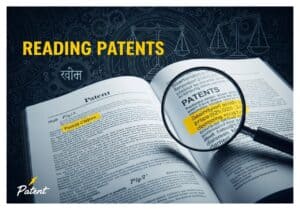Simplement le plus grand répertoire de prompts d'IA spécialisé en conception de produits et innovation

Bienvenue dans le plus grand répertoire mondial d'instructions d'IA dédié à la conception avancée de produits, à l'ingénierie, à la science, à l'innovation, à la qualité et à la fabrication. Si les outils d'IA en ligne transforment rapidement le paysage de l'ingénierie en augmentant les capacités humaines, leur véritable puissance est révélée par des instructions précises et élaborées par des experts. Ce répertoire complet vous fournit une collection de telles instructions, vous permettant de commander des systèmes d'IA capables de traiter de vastes quantités de données, d'identifier des modèles complexes et de générer des solutions inédites bien plus efficacement que les méthodes traditionnelles.
Découvrez et affinez les invites exactes nécessaires pour exploiter les agents d'IA en ligne afin d'optimiser vos conceptions pour des performances et une fabricabilité maximales, d'accélérer les simulations complexes, de prédire avec précision les propriétés des matériaux et d'automatiser une gamme variée de tâches analytiques critiques.
Les filtres de recherche avancés permettent un accès rapide à ce vaste répertoire et couvrent tout le spectre de l'ingénierie moderne.
Compte tenu des ressources et du temps disponibles sur le serveur, les invites elles-mêmes sont réservées aux membres enregistrés et ne sont pas visibles ci-dessous si vous n'êtes pas connecté. Vous pouvez vous inscrire, 100% gratuit :
Adhésion requise
Vous devez être membre du site pour accéder à ce contenu.
- Génération de code et débogage
Invitation à l'IA à Debug VHDL State Machine Code Snippet
- Conception pour la fabrication (DfM), Optimisation de la conception, Analyse des modes de défaillance et de leurs effets (AMDEC), Méthode des éléments finis (FEM), FPGA, Assurance qualité, Contrôle de qualité, Validation, Vérification
This prompt analyzes a provided VHDL code snippet for a Finite State Machine (FSM) and a description of an observed incorrect behavior or error message. The AI should identify potential issues such as state transition errors output logic faults race conditions or syntax problems and suggest corrections. This aids in FPGA/ASIC development.
Sortie :
- Texte
- ne nécessite pas d'Internet en direct
- Fields: {vhdl_code_snippet} {fsm_description_and_ports} {observed_problem_or_error_message} {target_fpga_family_optional}
- Best for: Identifying and suggesting fixes for common errors in VHDL FSM implementations helping engineers debug designs for FPGAs or ASICs more efficiently.
- Génération ou augmentation des données
Invitation à l'IA à Generate Synthetic ADC Noise CSV
- Digital Twin, Machine Learning, Assurance qualité, Contrôle de qualité, Traitement du signal, Simulation, Méthodes d'essai
This prompt generates a CSV dataset of synthetic Analog-to-Digital Converter (ADC) output codes incorporating various noise types. Users specify ADC resolution signal level and characteristics of quantization noise thermal noise and 1/f noise. This is useful for testing digital signal processing algorithms.
Sortie :
- CSV
- ne nécessite pas d'Internet en direct
- Fields: {adc_resolution_bits} {num_samples} {noise_parameters_json} {dc_signal_level_percent_fs}
- Best for: Creating realistic ADC output data with controlled noise characteristics for simulating and testing DSP algorithms filter performance or ADC modeling without needing hardware.
- Extraction d'informations
Invitation à l'IA à Extract Algorithm Details Research Paper
- Carte de contrôle, Machine Learning, Suivi des performances, Amélioration des processus, Gestion de la qualité, Recherche et développement, Traitement du signal, Statistical Analysis
This prompt analyzes the text of a research paper focusing on a specific signal processing or control algorithm. It extracts key details such as the algorithms steps mathematical formulation performance metrics reported and implementation notes. The output is a structured text summary.
Sortie :
- Texte
- ne nécessite pas d'Internet en direct
- Fields: {research_paper_text} {algorithm_name} {sections_to_focus_on_list}
- Best for: Efficiently understanding the core aspects of a new or complex algorithm presented in a research paper without reading the entire document useful for feasibility studies or implementation planning.
- Dépannage et diagnostic
- Génie électrique
Invitation à l'IA à Interpret SCADA Alarm Logs for Root Cause Analysis
- Génie électrique, Analyse des modes de défaillance et de leurs effets (AMDEC), Algorithmes de maintenance prédictive, Amélioration des processus, Optimisation des processus, Contrôle de qualité, Gestion de la qualité, Analyse des causes profondes, Réseau intelligent de réponse à la demande
This prompt processes SCADA alarm log extracts to cluster alarms temporally and logically to infer root causes and suggest preventive maintenance actions for electrical grid equipment.
Sortie :
- Markdown
- ne nécessite pas d'Internet en direct
- Fields: {scada_alarm_log_text}
- Best for: SCADA alarm pattern recognition and fault cause summarization
- Génération ou augmentation des données
- Génie électrique
Invitation à l'IA à Expand Power System Fault Cases Dataset
- Machine Learning, Algorithmes de maintenance prédictive, Amélioration des processus, Gestion de la qualité, Énergie renouvelable, Analyse des risques, Simulation, Pratiques de durabilité
This prompt creates new, realistic fault case scenarios with varied parameters (fault type, location, duration) based on an existing power system faults dataset to assist in machine learning model training or stress testing.
Sortie :
- JSON
- ne nécessite pas d'Internet en direct
- Fields: {power_faults_dataset_json} {number_of_new_cases}
- Best for: Augmenting fault datasets for power system simulations or ML training
- Génération ou augmentation des données
- Génie électrique
Invitation à l'IA à Generate Synthetic Sensor Noise Data
- Artificial Intelligence (AI), Machine Learning, Assurance qualité, Contrôle de qualité, Sensors, Traitement du signal, Simulation, Statistical Analysis
This prompt generates synthetic noise data matching the statistical characteristics (mean, variance, distribution type) of the input sensor noise dataset for augmenting sensor signal measurements in electronic experiments or simulations.
Sortie :
- CSV
- ne nécessite pas d'Internet en direct
- Fields: {sensor_noise_data_csv} {desired_number_of_points}
- Best for: Creating synthetic noise data sets for sensor analysis
- Génération ou augmentation des données
- Ingénierie mécanique
Invitation à l'IA à Générer des données synthétiques sur les courbes contrainte-déformation
- Alliages, Méthode des éléments finis (FEM), Matériels, Génie mécanique, Propriétés mécaniques, Métallurgie, Développement de produits, Simulation, Corrosion sous contrainte
Cette invite génère des points de données synthétiques de contrainte-déformation pour un alliage métallique hypothétique basé sur des propriétés mécaniques clés. Elle est utile pour créer des ensembles de données illustratifs pour le prétraitement FEM ou à des fins éducatives lorsque des données expérimentales réelles ne sont pas disponibles. La sortie est au format CSV.
Sortie :
- CSV
- ne nécessite pas d'Internet en direct
- Champs : {nom_de_l'alliage} {résistance_à_la_traction_ultimate_mpa} {résistance_à_l'élasticité_mpa} {allongement_à_la_rupture_en_pourcent}
- Idéal pour : Créer des ensembles de données plausibles sur le comportement des matériaux pour des simulations ou des exemples éducatifs en l'absence de données expérimentales spécifiques.
- Extraction d'informations
- Ingénierie mécanique
Invitation à l'IA à Compilation du tableau des dimensions standard des composants
- Conception pour la fabrication additive (DfAM), Conception pour la fabrication (DfM), Fixations, Matériels, Génie mécanique, Conception de Produits, Développement de produits, Assurance qualité, Contrôle de qualité
Cette invite permet d'extraire et de présenter sous forme de tableau les dimensions standard des composants mécaniques courants (par exemple, les boulons, les roulements, les tuyaux) à partir d'un extrait de texte d'un manuel d'ingénierie ou de l'URL d'une page web pertinente. L'objectif est d'obtenir un tableau structuré de ces dimensions. Le résultat est un tableau Markdown pour une meilleure lisibilité.
Sortie :
- Markdown
- nécessite l'utilisation d'Internet en direct
- Champs : {handbook_section_text_or_URL} {nom_du_composant} {liste_des_en-têtes_des_dimensions}
- Idéal pour : Créer des tableaux de référence rapide des dimensions standard des composants à partir de documents de référence, utiles pour la conception et le dessin.
- Extraction d'informations
- Ingénierie mécanique
Invitation à l'IA à Extraire les modes de défaillance de la recherche
- Corrosion, Conception pour la fabrication additive (DfAM), Conception pour la fabrication (DfM), Analyse des défaillances, Analyse des modes de défaillance et de leurs effets (AMDEC), Maintenance, Génie mécanique, Gestion de la qualité, Analyse des risques
Cette invite est conçue pour analyser le texte d'un document de recherche ou l'URL d'un document de recherche accessible au public afin de trouver des mentions de modes de défaillance spécifiques dans des composants ou des systèmes mécaniques. Elle énumérera les modes de défaillance identifiés et le contexte ou les causes qui leur sont attribués. Cela permet de recueillir rapidement des informations sur les mécanismes de défaillance courants ou nouveaux.
Sortie :
- Markdown
- nécessite l'utilisation d'Internet en direct
- Champs : {research_source_text_or_URL} {component_type} {failure_keywords_list}
- Idéal pour : Agréger les connaissances sur les mécanismes de défaillance à partir de la littérature technique afin d'éclairer la conception, la sélection des matériaux ou les stratégies d'entretien.

































Personne n'a discuté de la partialité potentielle de la sélection de l'IA pour ces annuaires ? L'IA n'est pas à l'abri des préjugés.